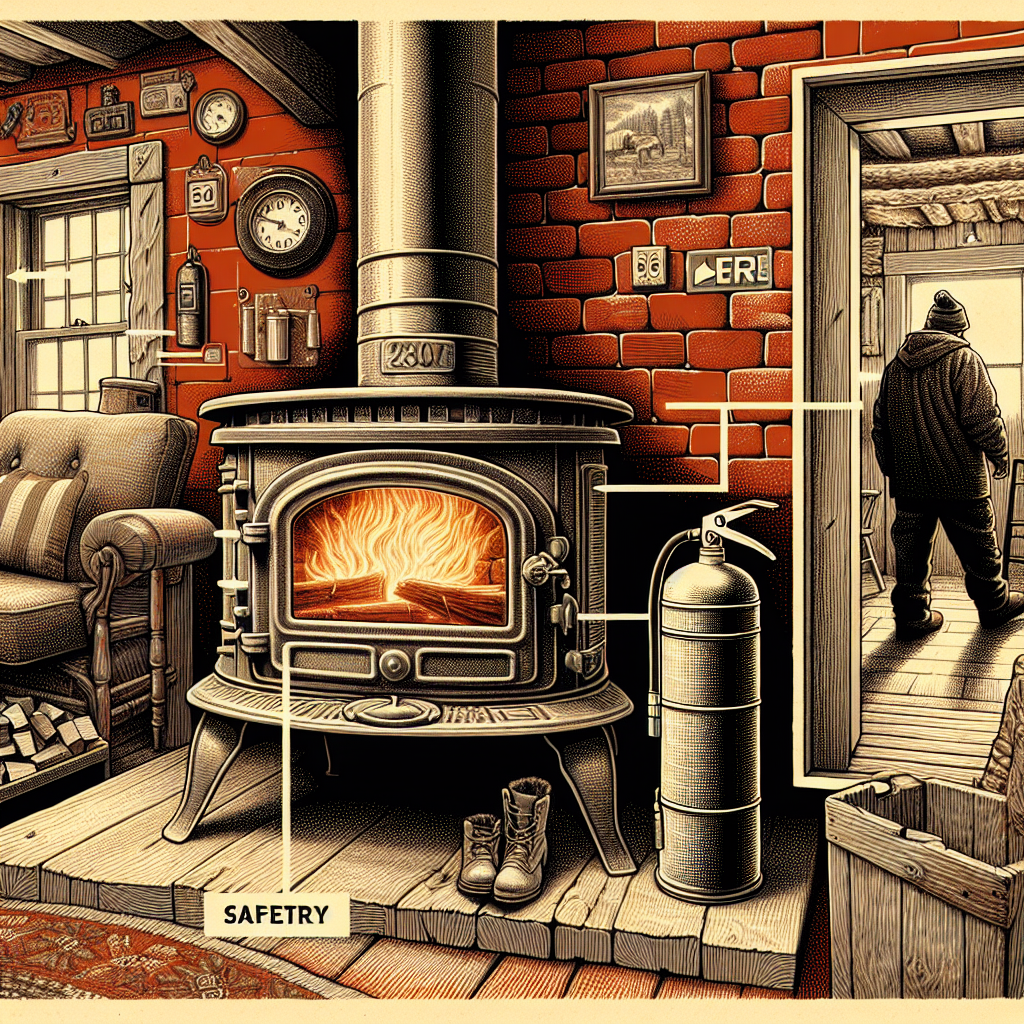Filed under Home Insurance on
Wood Stove Insurance Tips for Safer Homes

As the chill of winter approaches, many homeowners turn to wood stoves as a reliable source of warmth and ambiance. While these appliances are wonderfully cozy, they bring unique challenges, particularly in the realm of home insurance and safety. If you are among the growing number of homeowners drawn to the traditional and efficient heat of a wood stove, it’s crucial to understand the intricate dance between this charming heating method and your insurance policy. In this comprehensive guide, we explore essential tips for wood stove insurance to ensure safer homes, offering insights to not only safeguard your property but also enhance your peace of mind.
Understanding Wood Stove Insurance
Before diving into specific tips, it’s important to define what wood stove insurance entails. Essentially, wood stove insurance refers to how your existing homeowners insurance policy reacts to the installation and use of a wood-burning stove. These devices, while efficient, can increase the risk of fire, thus impacting your coverage needs and potentially your insurance premiums. Surprisingly, many homeowners are unaware that installing a wood stove without notifying their insurance provider can lead to denied claims or even cancellation of their policy.
Communicating with Your Insurer
One of the first steps when considering a wood stove is to discuss your plans with your insurance provider. Here’s why this communication is critical:
- Coverage Adjustments: The presence of a wood stove may necessitate changes to your policy or an increase in premiums due to the heightened risk of fire.
- Claim Validity: Failing to inform your insurer about the installation can result in future claims being denied.
- Professional Installation Proof: Insurers often require evidence that your wood stove was installed by a professional according to local building codes.
Installation Best Practices
Proper installation is integral to both safety and insurance compliance. Here’s what to consider:
Choosing the Right Location
Location is key. A wood stove should be placed with ample clearance from furniture, drapes, and other combustibles. It is advisable to consult local building codes, which dictate minimum clearance distances that ensure safety.
Certified Appliances
When selecting a wood stove, look for models certified by recognized safety organizations such as the EPA (Environmental Protection Agency) or UL (Underwriters Laboratories). Certified models are designed with strict standards that limit emissions and enhance safety, reducing fire risks and insurance-related complications.
Professional Installation
While DIY projects can be rewarding, installing a wood stove isn't the time to test your handyman skills. Professional installation not only ensures compliance with safety and building standards but also enhances insurer confidence. Most companies mandate professional installation as a condition for maintaining your coverage.
Regular Maintenance
Routine maintenance can significantly mitigate risks associated with wood stoves:
Chimney Inspections and Cleaning
Chimneys should be inspected annually by a professional to remove creosote build-up, which is a leading cause of chimney fires. Keeping a clean chimney not only reduces fire risk but may also lower insurance premiums.
Regular Stove Check-ups
Check for any signs of wear or damage, particularly around the joints and seals. Addressing these issues promptly can prevent smoke and fire hazards, maintaining a safer home environment.
Understanding Fire Safety Measures
Implementing basic fire safety measures enhances both the physical safety of your home and the reliability of your wood stove insurance policy:
Smoke Detectors and Fire Extinguishers
Ensure you have functioning smoke detectors strategically placed near the stove and in bedrooms. A fire extinguisher rated for wood fires should also be readily accessible. Both measures may earn you discounts on your home insurance.
Safe Wood Storage
Stack wood at a safe distance from your stove. Not only does this prevent accidental fire, but dry wood also burns more efficiently, reducing emissions and thereby soothing insurance considerations concerning environmental standards.
Document Everything
Keeping meticulous records can prove invaluable:
- Installation Documentation: Save all related paperwork, including receipts from professional installations and certifications of the stove.
- Maintenance Records: Maintain a log of inspections, cleanings, and repairs as proof of regular maintenance.
- Modification Notifications: Document all communications with your insurance provider, including written confirmation of any policy adjustments.
Reviewing Your Insurance Policy
Regularly reviewing your insurance policy is wise:
Policy Updates
Confirm that your policy includes sufficient coverage for a worst-case scenario involving your wood stove, ensuring it covers structural repairs and personal property damage.
Discounts and Savings
Ask about potential discounts related to safety enhancements or up-to-date wood stove certifications. Some insurers offer premium reductions for homes demonstrating proactive risk management.
Industry Trends and Expert Opinions
It’s beneficial to stay informed of industry trends affecting both wood stove usage and insurance policies:
Eco-friendly Models
Recent advances have resulted in more eco-friendly wood stoves that produce lower emissions. These models can positively influence insurance discussions by demonstrating safety and environmental responsibility.
Professional Insights
Experts suggest that as more homes adopt secondary heating systems like wood stoves, insurance products are likely to evolve, potentially offering more tailored options and coverage levels. Keeping abreast of these changes can help optimize your coverage and cost-effectiveness.
Conclusion
Navigating the intersection of wood stove installation and home insurance might require some diligence, but it's a crucial aspect of ensuring both safety and comprehensive coverage. By following these wood stove insurance tips, you bolster your home’s warmth with peace of mind, cozying up beside the fire with the assurance that your insurance policy comprehensively protects your lovely abode. For families ready to embrace the charm and efficiency of wood stoves, careful preparation and informed communication with your insurer pave the way to safer homes.



